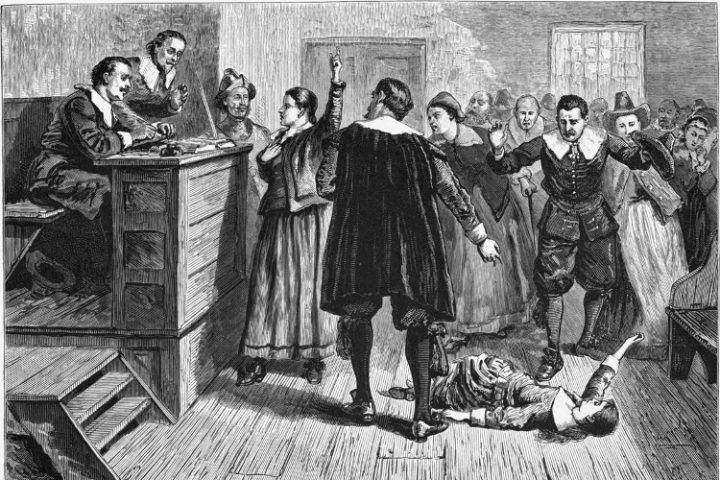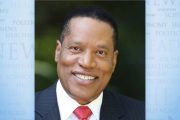
On this day in 1692, Massachusetts Bay Province Governor William Phips officially called for an end to the infamous Salem Witch Trials.
“I saw many innocent persons might otherwise perish,” Phips wrote in a letter to the Crown. Phips cited his absence from Boston while fighting Indians and the zealousness of Lieutenant Governor William Stoughton for allowing the Salem trials to get out of hand.
While this bizzare bit of American history is just strange and surreal enough to warrant an article commemorating its conclusion, the legacy of this epoch in our colonial past is so present with us today that the phrase “witch hunt” is used by journalists everywhere, particularly in recent days, in the context of the prosecution — and some would argue, persecution — of former President Donald J. Trump.
A simple Google search of the phrase “Donald Trump witch hunt” delivers nearly six million results! So, while the trials of witches in Salem may have ended today in 1692, perhaps the hunt for witches lingers on.
In light of this contemporary context, it’s worthwhile to understand what the witch hunts and subsequent trials were and what they were not. Maybe a better, more historically accurate appreciation of that strange series of events will illuminate whether the pursuit of “justice” against Donald Trump is a witch hunt or not.
The Salem witch trials, which occurred from late February 1692 through April 1693, resulted in at least 25 deaths, including 19 executions by hanging, one death due to torture, and five from harsh jail conditions. More than 160 people faced accusations of witchcraft, many losing their freedom and property rights. This extended beyond Salem to nearby towns in eastern Massachusetts Bay Colony. Approximately 50 people confessed to witchcraft, primarily to avoid trial.
These trials involved not only the accused but also neighbors, jurors, ministers, and magistrates. In October 1692, Governor William Phips dissolved the witchcraft court, leading to a decline in accusations. In January, a new court began resolving the remaining cases and clearing the jails, marking the end of witchcraft convictions in New England. The Salem trials resulted in more accusations and executions than any prior witchcraft trials in the region.
The accusations began when two girls in Reverend Samuel Parris’s home, Betty Parris and Abigail Williams, displayed strange behavior. Conflicts within the village, such as disputes over Parris’s benefits, contributed to the tension. Doctors couldn’t explain the girls’ symptoms, and accusations of witchcraft emerged. Tituba, an Indian slave; Sarah Good, a homeless woman; and Sarah Osburn, involved in an inheritance dispute, were the initial targets. Accusations spread, affecting respected community members. Governor Phips established a special court to handle the increasing number of cases, and the use of spectral evidence (claims of being attacked by unseen spirits) became prominent. Many confessed under pressure, while those who didn’t were executed.
In October, influential figures urged an end to the trials, and with the discontinuation of spectral evidence, the convictions ceased. Governor Phips disbanded the special court, and a Superior Court took over the remaining cases. Samuel Parris eventually left his position, and efforts were made to clear the names of the accused and executed, a process that, believe it or not, literally continues today.
The cause of the Salem Witch Trials has been the subject of scholarly debate and analysis over the years, and while there may not be a single, universally accepted theory, several factors are commonly acknowledged by historians as contributing to the outbreak of the trials. The following are some of the key factors often discussed in scholarly research:
• Religious and Cultural Context: New England in the late 17th century was a deeply religious and superstitious society. Puritan beliefs held a strong influence, and there was a widespread fear of the Devil and witchcraft. The religious fervor and the belief in the supernatural created a fertile ground for accusations.
• Social and Economic Strain: The Salem Village community was experiencing social and economic tensions, including land disputes and competition for resources. This led to friction and resentment among villagers, providing a backdrop for accusations.
• Role of Adolescents: Many of the accusers during the trials were young girls, and some scholars suggest that their behavior might have been influenced by repressive Puritanism, leading to hysteria and attention-seeking.
• Political Factors: The political climate and the authority of the Massachusetts Bay Colony government played a role. The trials provided a means for authorities to demonstrate their ability to maintain order and suppress perceived threats.
• Epidemic Hysteria: The concept of mass hysteria is often cited. Once the trials began, they quickly spiraled out of control as more and more accusations were made, creating a self-perpetuating cycle of fear and accusations.
• Legal System Failures: The Salem Witch Trials revealed significant shortcomings in the legal system, including the use of spectral evidence and the lack of due process. These issues contributed to the trials’ tragic outcomes.
It’s important to note that the Salem Witch Trials weren’t caused by a single factor, but rather a complex interplay of religious, social, cultural, and political elements. The exact balance of these factors and their relative importance continues to be a subject of study and debate among scholars, but they collectively shaped the tragic events of 1692.
With the foregoing summary of the attitudes and actions of citizens and political leaders in Salem in the late 17th century, as well as the scholarly consensus as to the primary contributing social and political causes, one can see more clearly whether any of those six factors can be applied to the legal proceedings against Donald Trump, or to the people pushing those proceedings at all costs.



